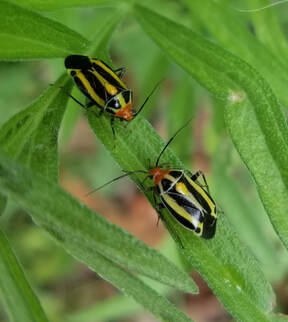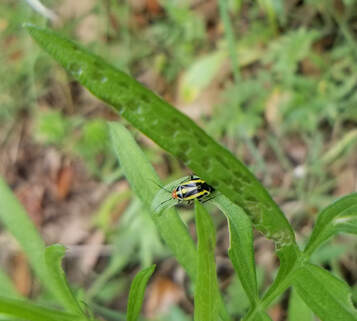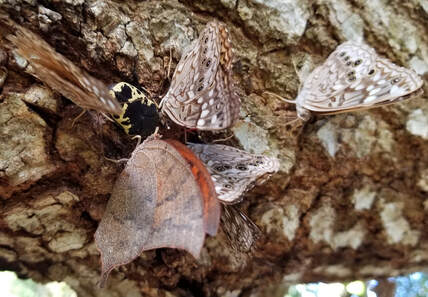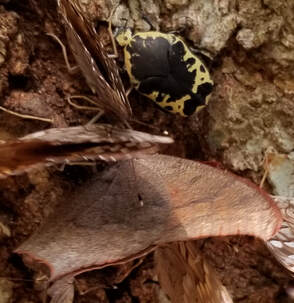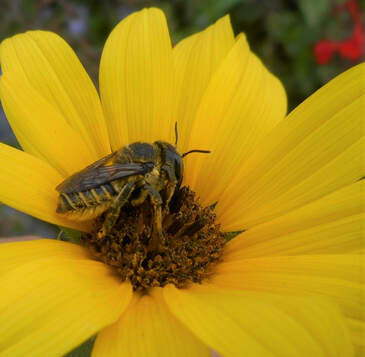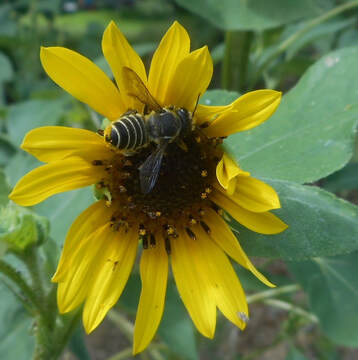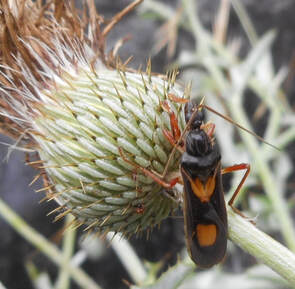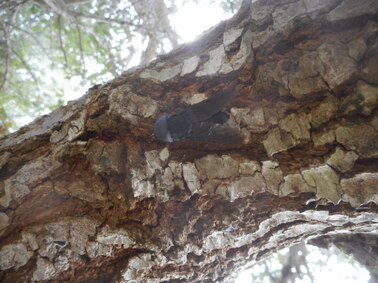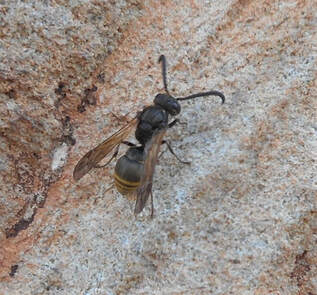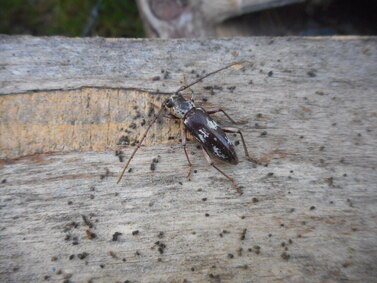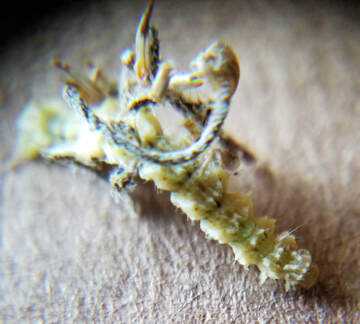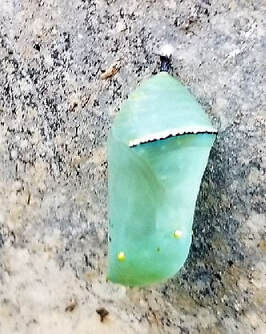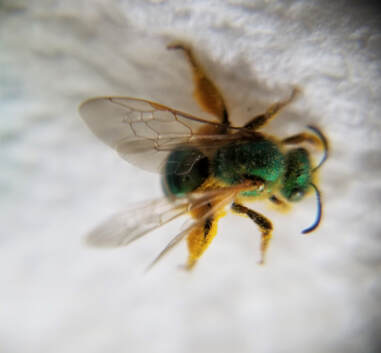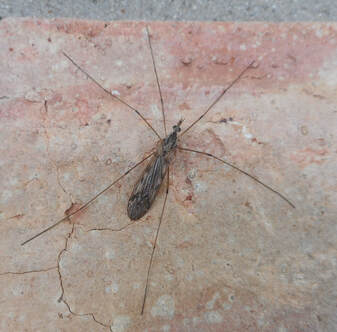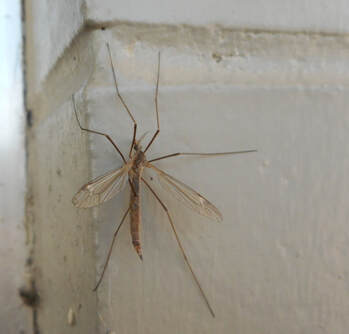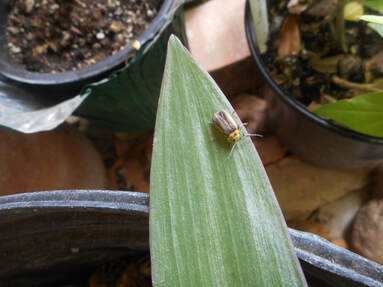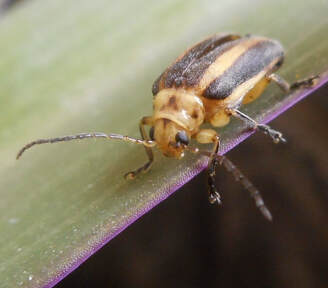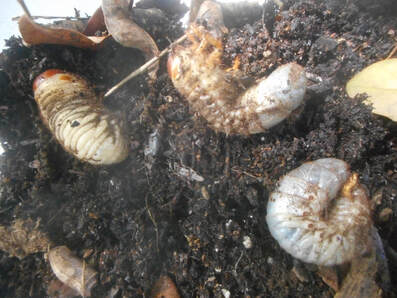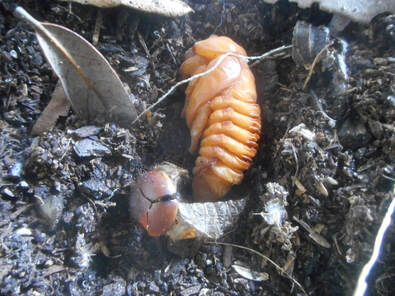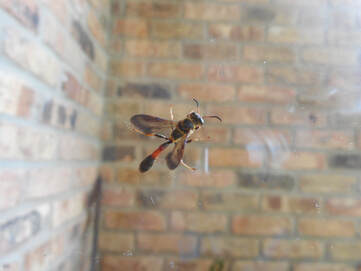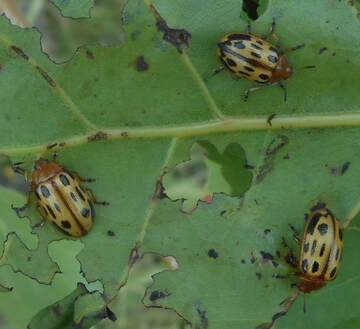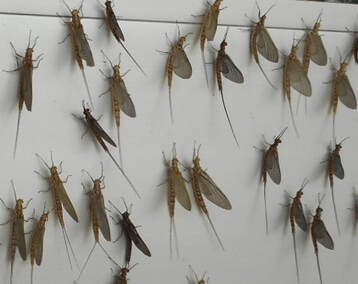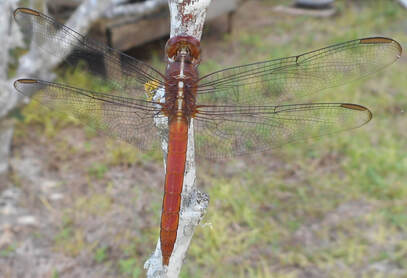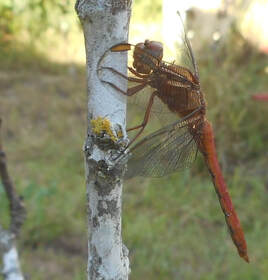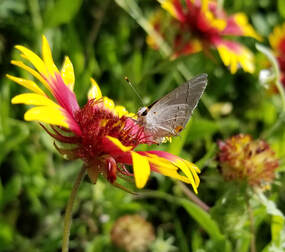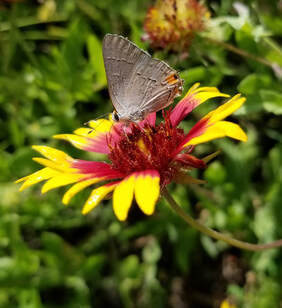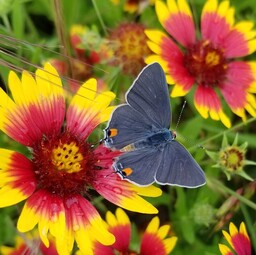To help find the hidden guest, click on the picture to enlarge.
Answers can be found at the bottom of this page.
|
176. Four-lined Plant Bug:
a) are beneficial insects b) suck plant juices from leaves causing wilt and drop c) feed on plant flower pollen d) a and c only e) a and b only |
|
177. Harlequin Flower Beetle:
a) occurs throughout the United States b) lives a solitary lifestyle c) feeds at sap flows on fake Willow and Live Oak trees d) none of the above e) a and c only |
|
178: Solitary Bees:
a) tend not to defend their nest sites b) tend to be smaller than social bees c) are less frequently observed than honeybees and bumble bees d) are beneficial pollinators e) all of the above |
|
179. Corsair Assassin Bugs:
a) are attracted to bright lights at night to feed on other insects b) bite is painless c) are found only in Canada d) a and c only e) b only |
|
180. Horse Fly:
a) female adults bite horses, mules and donkeys b) is among the largest fly species c) male feeds on nectar d) a, b and c only e) b and c only |
|
181. Mexican Honey Wasps:
a) are nectar gatherers and pollinators b) feed on pest insects like Asian citrus psyllids c) are social insects that can sting d) produce and store honey e) all of the above |
|
185. Green Sweat Bee:
a) produce sweat or perspiration when flying b) adults feed on pollen and nectar c) will not sting d) a and b only e) a and c only |
|
186. Crane Flies:
a) have four wings or two pair b) are long-legged weak flying insects c) are fierce biters d) a and b only e) b and c only |
|
187. Trirhabda species Leaf Beetle:
a) is a slender flower scarab b) is a beneficial insect with lapping mouthpart c) is a colorful, yellow and brownish-black, vegetarian d) all of the above e) b and c only |
|
188. C-shaped Grubs:
a) are butterfly and moth larvae b) are fly larvae c) are beetle larvae d) are grasshopper nymphs e) a and b only |
|
192. Neon Skimmer – Red Dragonfly:
a) is commonly seen in Texas b) frequents ponds and meadows c) is recognized by its flashy color d) a and c only e) a, b and c only |
|
193. Gray Hairstreak Butterfly:
a) is the most wide-spread hairstreak in North America b) is easy to spot perching on a flower c) tends to fly slowly due to its small size d) none of the above e) a and b only |
|
Answers:
|
176 b, 177 c, 178 e, 179 a, 180 d, 181 e, 182 a, 183 d, 184 e,
185 b, 186 b, 187 c, 188 c, 189 d, 190 e, 191 b, 192 e, 193 a. |
